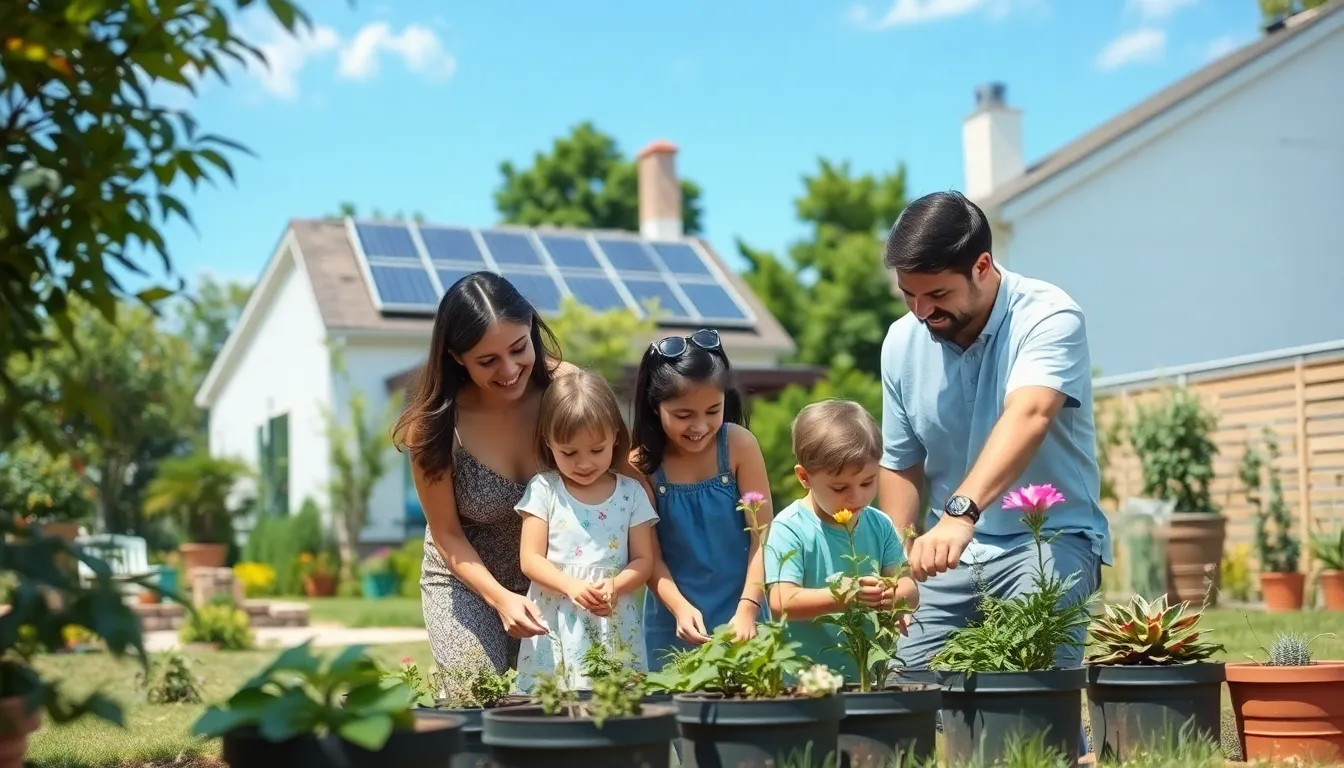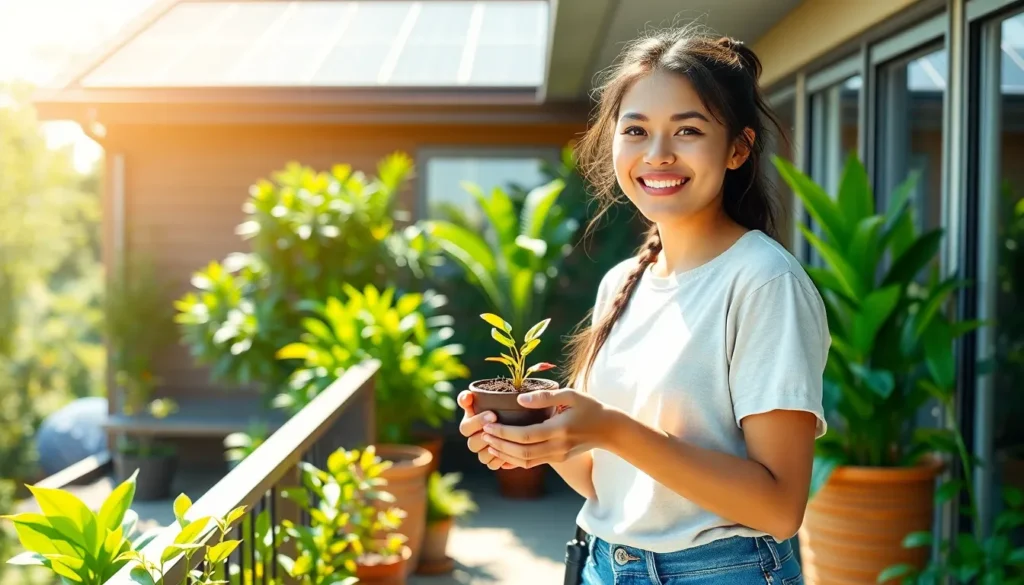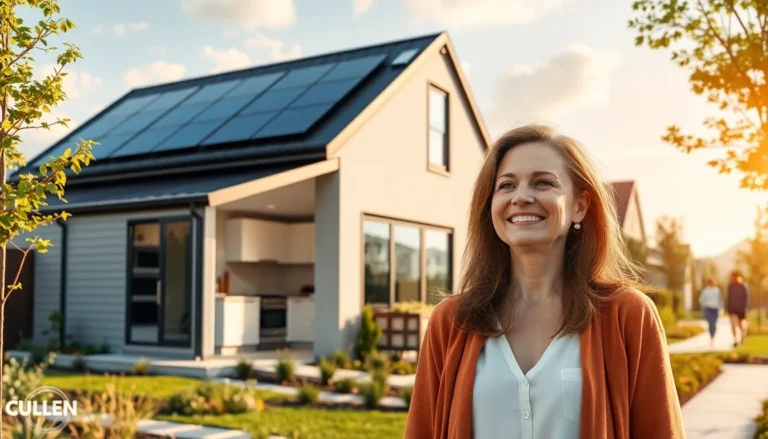In a world where eco-friendly choices are becoming the norm, green smart living isn’t just a trend—it’s a lifestyle revolution. Imagine a home that not only looks good but also treads lightly on the planet. From energy-efficient appliances to sustainable materials, it’s all about making smart choices that benefit both the environment and your wallet.
Table of Contents
ToggleUnderstanding Green Smart Living
Green smart living represents a lifestyle shift towards eco-conscious decisions in everyday life. This approach prioritizes sustainable practices that both enhance personal well-being and protect the environment.
Definition and Importance
Green smart living combines environmental awareness with technological advancements. This philosophy encourages individuals to adopt eco-friendly habits, resulting in reduced carbon footprints and energy savings. Many people increasingly recognize its importance, as it contributes to a healthier planet, improved air quality, and lower utility costs. By focusing on sustainable practices, this lifestyle promotes long-term benefits for personal finances and global ecosystems.
Key Principles of Green Smart Living
Key principles of green smart living focus on sustainability, efficiency, and innovation. Energy efficiency serves as a crucial aspect, prompting the use of appliances that consume less power. Sustainable materials, such as bamboo or recycled products, enhance environmental stewardship. Water conservation techniques, like low-flow fixtures, also play a vital role in this lifestyle. Smart home technology optimizes energy use, creating an interconnected system that maximizes efficiency. Collectively, these principles foster a harmonious relationship between individuals and their environment.
Benefits of Green Smart Living

Green smart living provides extensive benefits, enhancing both the environment and individual well-being. Embracing this lifestyle encourages sustainable practices that contribute positively to society.
Environmental Impact
Environmental impact remains a key focus in green smart living. Eco-friendly practices significantly reduce carbon footprints, helping to combat climate change. Adoption of renewable energy sources, such as solar panels, plays a crucial role in sustainable home design. Efficient water conservation techniques minimize waste and protect vital water resources. Furthermore, using sustainable materials in construction reduces deforestation and pollution. Improved air quality results from utilizing energy-efficient appliances, lowering harmful emissions.
Economic Advantages
Economic advantages of green smart living are substantial. Energy-efficient appliances not only save money on utility bills but also enhance the home’s value. Tax incentives and rebates often accompany the installation of renewable energy systems, providing financial relief. Reduced maintenance costs emerge through durable, sustainable materials that require less frequent replacement. Long-term savings accrue from water conservation techniques, significantly lowering monthly expenses. This lifestyle shift ultimately leads to a more financially secure future.
Practical Tips for Implementing Green Smart Living
Adopting green smart living practices enhances both sustainability and personal comfort. Individuals can integrate several strategies into their daily routines.
Energy Efficiency at Home
Incorporating energy-efficient appliances reduces electricity consumption. Energy Star-rated devices often consume 10-50% less energy than standard models. Installing LED lighting contributes to significant energy savings over time. Smart thermostats adjust heating and cooling automatically, leading to noticeable reductions in utility bills. Home insulation plays a critical role, as proper insulation keeps spaces well-regulated, preventing unnecessary heating or cooling.
Sustainable Transportation Options
Opting for public transportation decreases carbon footprints. Biking or walking not only promotes health but also reduces vehicle emissions. Considering electric vehicles presents a cleaner alternative to traditional gasoline-powered cars. Carpooling with neighbors minimizes the number of vehicles on the road, further reducing pollution. Using ride-sharing services provides a convenient option while contributing to lower overall emissions.
Waste Reduction Strategies
Implementing recycling programs effectively diverts waste from landfills. Composting organic waste enriches soil while reducing landfill contributions. Purchasing in bulk minimizes packaging waste and often proves cost-effective. Utilizing reusable bags, bottles, and containers reduces single-use plastic consumption. Donating unwanted items promotes a circular economy, ensuring that products continue to benefit others.
Technology’s Role in Green Smart Living
Technology plays a vital role in facilitating green smart living by enhancing energy efficiency and promoting sustainable practices. Smart home devices offer innovative solutions to manage energy consumption effectively.
Smart Home Devices
Smart home devices streamline the management of energy use. Programmable thermostats optimize heating and cooling based on occupancy, which significantly lowers energy bills. Energy monitoring systems provide real-time insights into consumption patterns, empowering users to make informed changes. Additionally, smart lighting adjusts automatically according to natural light, reducing electricity use without sacrificing comfort. Collectively, these devices enhance convenience and contribute to sustainability.
Innovative Eco-Friendly Solutions
Innovative eco-friendly solutions abound in green smart living. Solar energy systems harness sunlight to produce clean electricity, minimizing reliance on fossil fuels. Rainwater harvesting systems collect and store water for irrigation or household use, reducing waste and conserving natural resources. Biodegradable materials in construction and household products help limit environmental impact. These solutions collectively foster a healthier planet while offering practical benefits to users.
Embracing green smart living is more than a trend; it’s a commitment to a sustainable future. By making informed choices about home design and daily habits individuals can significantly reduce their environmental impact while enjoying financial benefits.
This lifestyle encourages the integration of innovative technologies that enhance energy efficiency and promote eco-friendly practices. As more people adopt these principles the collective effort leads to a healthier planet and improved personal well-being.
Ultimately, green smart living empowers individuals to create a harmonious balance between their needs and the environment, paving the way for a more sustainable and prosperous future.




